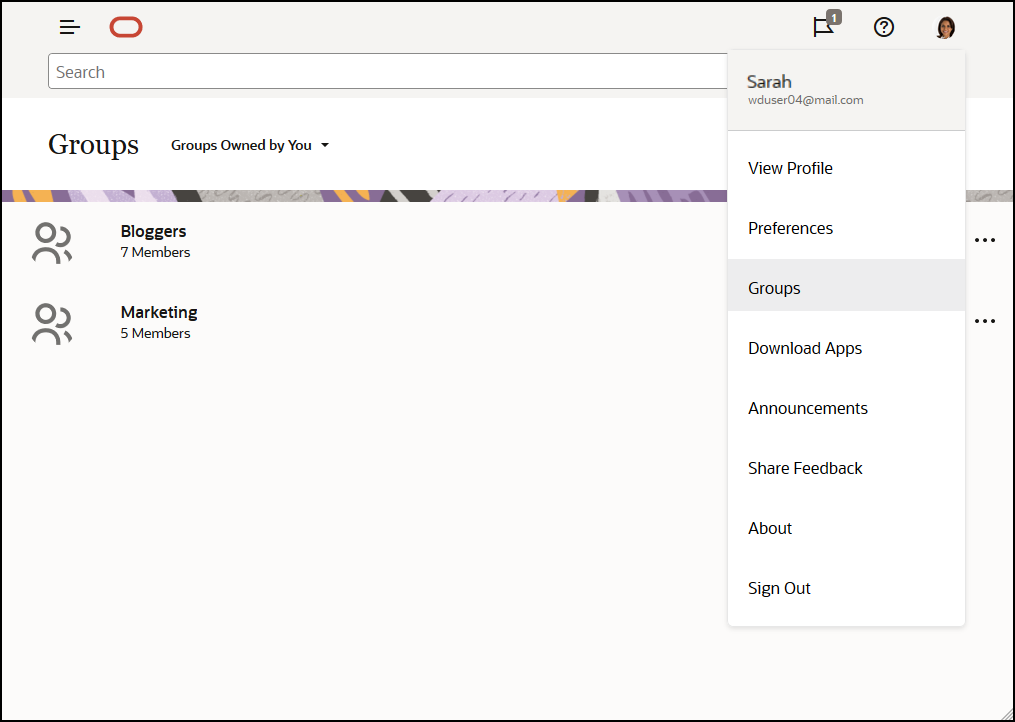Groups
Groups in Oracle Content Management allow you to quickly share and communicate with many people at a time. For example, you can share a file with a group or add a group to a conversation, just like you would with individual users. Then everyone in the group has access to that shared file or conversation.
Your service administrator may set up groups for your organization, but you can also create your own groups. You join and create groups from your user menu in the top-right corner of the Oracle Content Management web interface.
If you join an existing group, you'll be included in any sharing that takes place for that group. For example, if someone adds the group as a member to a folder, then you'll have access to that folder, too.
When creating a group, you can make it a public group, so everyone can see the group in the list of public groups. If you want, you can also allow people to add themselves to the group. This can be useful, for example, if you want to set up a conversation to gather feedback from a large number of people.
A private group lets you limit membership, but people who aren't members can find the group and use it just like they would any group, to share conversations or folders. For example, you could create a group for the sales department. Anyone not in the group can still use that group to collaborate with that department.
A closed group offers the tightest control. No one can see the group unless they're already a member and no one can add themselves to the group. For example, perhaps a small set of people need to discuss an upcoming merger. The group and its conversations are hidden from everyone except the members of the group.
You add people to a group by searching for their names or email addresses and then assigning roles to them. If you have a manager role in groups owned by someone else, you can add people to those groups.
Learn more...
